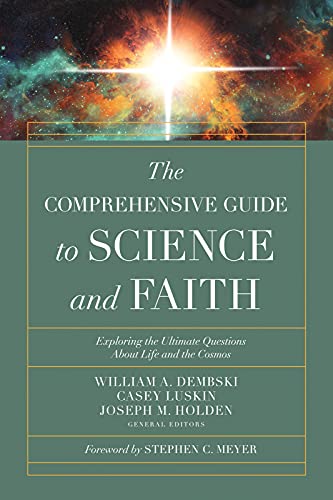There Is No Such Thing as a Fossil Mind
A chapter on evolutionary psychology in Comprehensive Guide to Science and Faith (2021) looks at the curious discipline of evolutionary psychologyThis month, the The Comprehensive Guide to Science and Faith: Exploring the Ultimate Questions About Life and the Cosmos (Harvest House 2021) appeared. The basic theme of the handbook, as described by editors design theorist William Dembski and Joseph Holden is “Science and Christianity are often presented as opposites, when in fact the order of the universe and the complexity of life powerfully testify to intelligent design.”

I wrote one of the chapters, “What is evolutionary psychology?”. It concerns the effort to understand human psychology by appealing to a prehuman (“evolutionary”) past. As such, it explains a large variety of human behaviours as the unconscious enactment of a Darwinian survival scenario among not-quite humans that is wired into modules in our brains.
Thus, the reasons we do things are not at all what we suppose:
Evolution explains, for example, why we shop: “Gatherers sifted the useful from things that offered them no sustenance, warmth or comfort with a skill that would eventually lead to comfortable shopping malls and credit cards.” Or gossip “Back in the day, if you didn’t care to find out what was going on, you were more likely to die and less likely to pass on your incurious genes.” Oh, and anger over trivial matters was once key to our survival.
As the examples above illustrate, EP does not explain puzzling human behavior so much as it offers Darwinian survival-of-the-fittest explanations for conventional behavior, which supplant traditional ones.
For example, why we are sexually jealous (not fear of abandonment, but “sperm competition”); why we don’t stick to our goals (evolution gave us a kludge brain); why we developed music (to “spot the savannah with little Pavarottis”); why art exists (to recapture that lost savannah); why many women don’t know when they are ovulating (if they knew, they’d never have kids); why some people rape, kill, and sleep around (our Stone Age ancestors passed on their genes via these traits), and why big banks sometimes get away with fraud (we haven’t evolved so as to understand what is happening).
EP also accounts for dreams (they increase reproductive fitness), false memories (there might be a tiger in that tall grass… ), menopause (men pursuing younger women), monogamy (control of females or else infanticide prevention), premenstrual syndrome (breaks up infertile relationships), romantic love (a “hardwired” drive to reproduce), rumination on hurt feelings (our brains evolved to learn quickly from bad experiences but slowly from the good ones), smiling (earlier, a cringe reaction), and wonder at the universe (explained by how early man lived).
In the chapter, I offer many more examples of the current effort to explain aspects of life or human behavior in a narrow, “Darwinian” way. These explanations satisfy a need felt by many for a “scientific” account of their behavior. But often, the science behind evo psych is nothing more than the fact that the persons offering the explanation have degrees in one or another field of psychology — and a knack for coming up with an idea that is easy to market in popular media. The output has earned considerable skepticism.
Of course, we are free to accept these ad hoc evo psych explanations if they wish. Like astrology and palm reading, they make good conversation pieces, But the claim that they are “science” does not strengthen them and should not give them more credibility.

American philosopher Subrena E. Smith recently launched a sharp attack on evo psych. She points out that neuroscience has never identified the brain modules or systems that would enable evo psych to make sense.
Here’s the problem in a nutshell: A woman may feel irritable because of premenstrual syndrome Neither she nor her man have any sense that the relationship should break up because she is infertile. Or even that she is infertile. Perhaps they were not trying to have a child anyway. The evo psych account of her discomfort would only make sense if something other than her discomfort — a module or system in her brain perhaps, inherited from prehuman ancestors because it led to more fertility — accounts for her irritability. But no one has ever found that module or system. A more reasonable explanation for her irritability remains the conventional one: fluctuating hormones will do that.
And, absent the postulated module — or a surviving prehuman ancestor we could study — evolutionary psychology is a discipline without a subject.
By far the biggest fish that evo psych tries to fry are compassion and religion. And that’s where the wheels come off.
Next: Compassion and religion: The pop science itches that always need scratching
You may also wish to read: Philosopher flattens evolutionary psychology. Rejecting evolutionary psychology means realizing that we cannot both claim to represent “Science!” and refuse to be bound by its standards.
